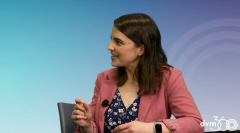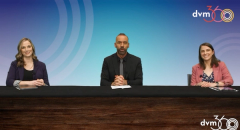
Taking the swab
Jenna Dockweiler MS, DVM, DACT, CCRT, CVAT, expands on how to get the best saliva swab from a pet.
Episodes in this series

Sponsored by Embark
Adam Christman, DVM, MBA: Walk me through a little bit on the test itself. How's it done? Can a pet owner do it? Does it have to be done by a veterinarian?
Jenna Dockweiler, MS, DVM, DACT, CCRT, CVAT: Absolutely. So a pet owner is certainly capable of collecting the sample. Although, if they prefer, we do have an in clinic option if they want the veterinarian to collect the sample. It's just a simple cheek swab. It's a soft, not bristly, little swab. No blood sample.
Lindsey Kock, DVM: Nobody likes to poke a puppy. *laughs*
Jenna Dockweiler, MS DVM, DACT, CCRT, CVAT: So the DNA that's in the saliva is gonna be the same as the DNA that's in the blood. We actually find that saliva samples are going to be stable over a longer period of time and a broader range of temperatures than a blood sample would be. It allows for things like getting lost in the mail and still having a readable DNA sample at the end of it. So that is why we use a saliva sample at Embark.
The process of how it works is we do recommend swabbing each cheek pouch for 30 to 60 seconds if you can. Really, if that swab is glistening with saliva, you are probably good to go. We also recommend fasting for 30 minutes prior to collection of that sample.
If you want to show the dog a treat to get them to be nice and drooly before you try to get their saliva, that can be helpful. If there's not visible particles of food on that swab, it's probably going to be a readable sample. If we ever can't read a DNA sample for whatever reason, we'll always send you a replacement swab at no charge.
Adam Christman, DVM, MBA: So to the client that put peanut butter on the swab, she said to me I got a really great sample. But I said, “what is all this on it?” So not good, right?
Jenna Dockweiler, MS, DVM, DACT, CCRT, CVAT: That would be an example of a bit too much food particle on the swab.
Adam Christman, DVM, MBA: Okay, got it. I understand it takes about 2 to 4 weeks to get the results back?
Jenna Dockweiler, MS, DVM, DACT, CCRT, CVAT: That's correct.
Newsletter
From exam room tips to practice management insights, get trusted veterinary news delivered straight to your inbox—subscribe to dvm360.
















